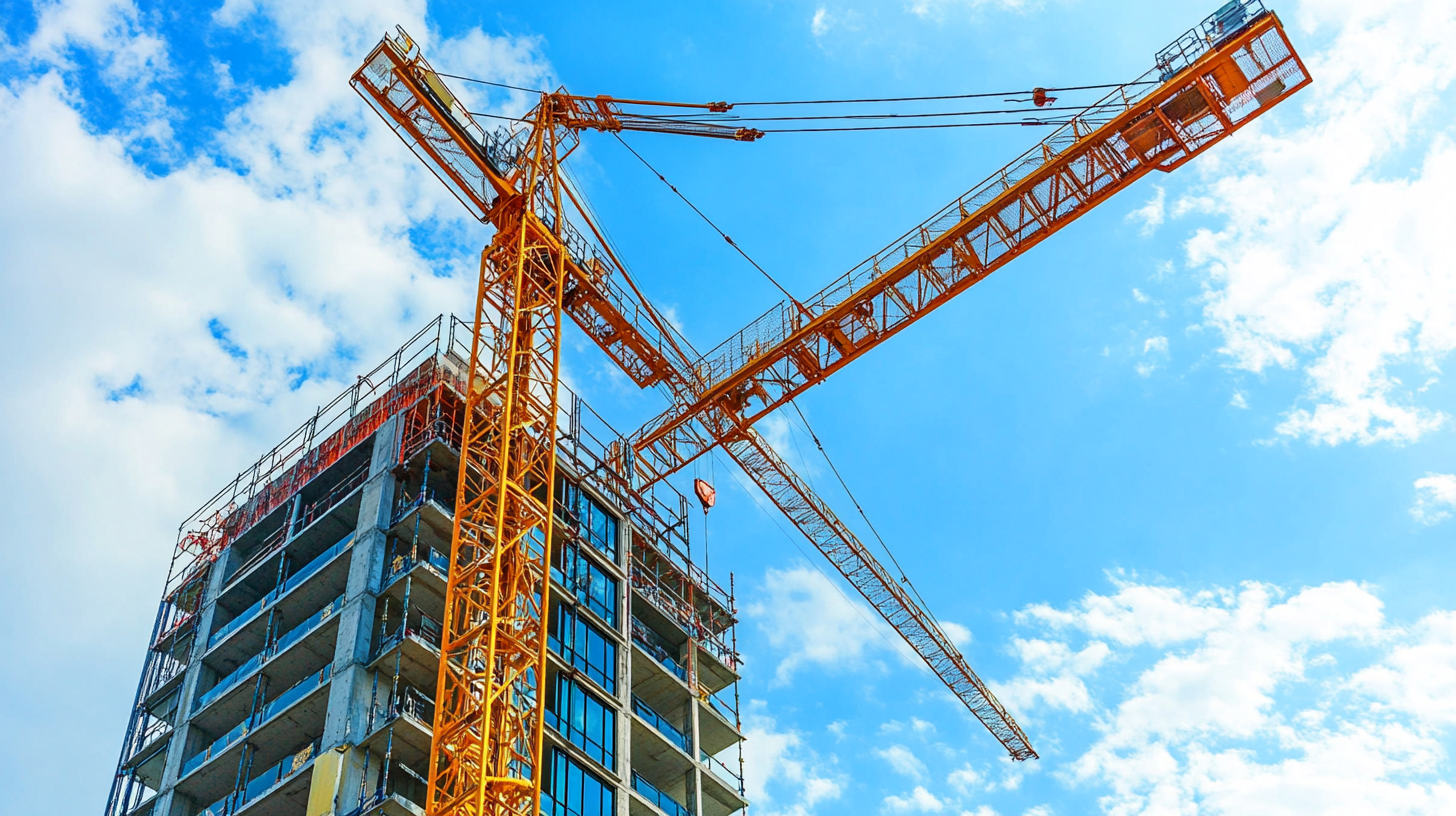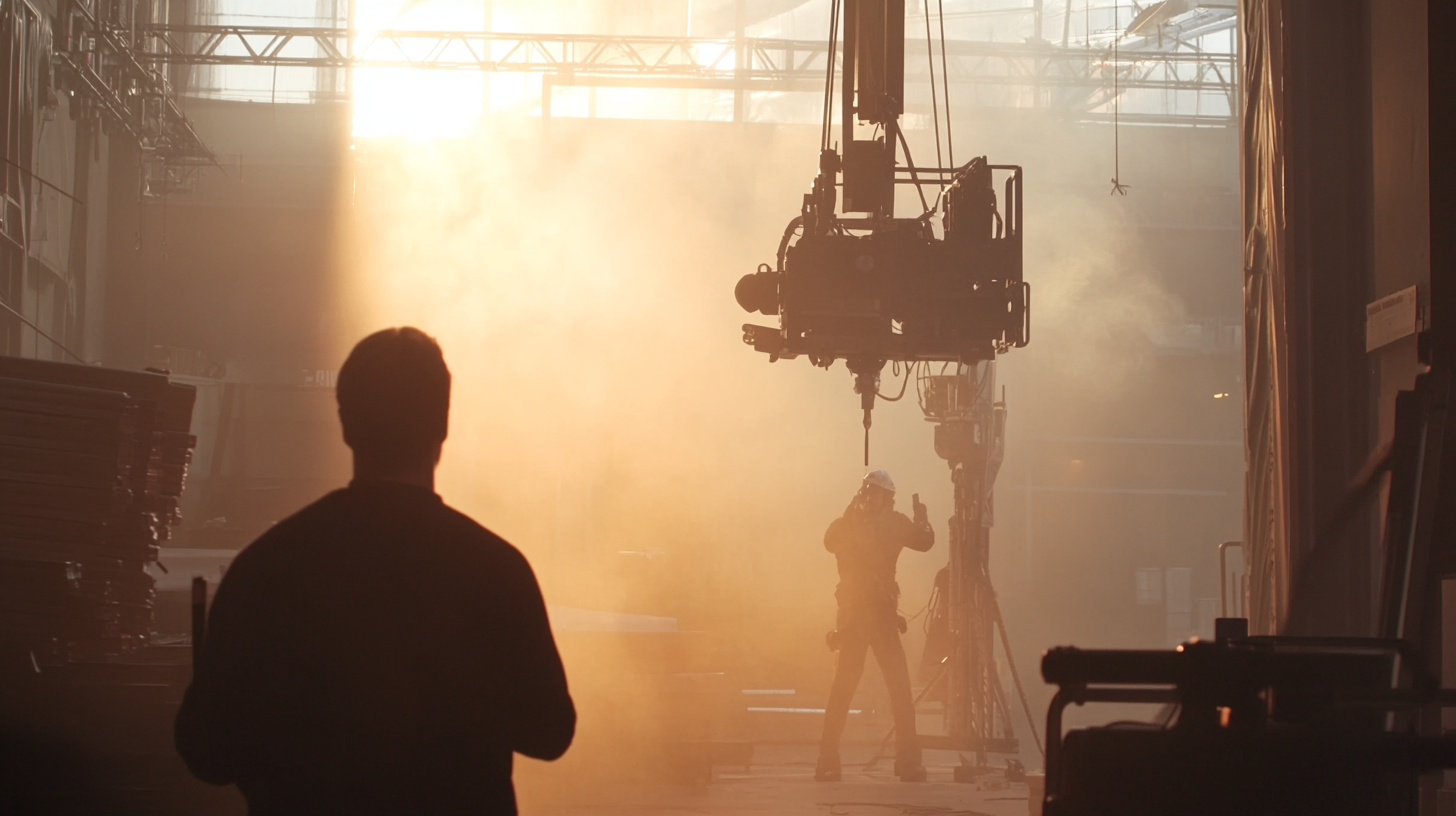Understanding the Technical Specifications and Load Capacities of Jib Cranes
In the realm of material handling and industrial operations, Jib Cranes have emerged as a crucial component for enhancing efficiency and safety in lifting tasks. According to a report by the Material Handling Industry of America (MHIA), the demand for cranes, including Jib Cranes, is projected to grow significantly, driven by increasing automation and advancements in lifting technology. These cranes are especially valued for their ability to facilitate overhead lifting without requiring substantial floor space, making them ideal for workshops and warehouses. With load capacities typically ranging from 500 pounds to over 15 tons, Jib Cranes provide versatile solutions tailored to various operational needs. Understanding their technical specifications, such as arm length, load capacity, and stability, is vital for maximizing their potential and ensuring workplace safety. This blog will explore the key aspects of Jib Cranes, equipping professionals with the knowledge to make informed decisions regarding their implementation and use in diverse industrial settings.

Understanding Jib Crane Types: From Wall-Mounted to Freestanding Designs
When it comes to jib cranes, understanding the various types available can significantly influence your operational efficiency and project outcomes. Wall-mounted jib cranes are popular due to their space-saving design, making them ideal for environments with limited floor space. These cranes utilize existing structures for support, providing a cost-effective solution for lifting materials within a designated area. They're particularly effective in warehouses and workshops where they can help minimize manual handling, thereby enhancing productivity.
On the other hand, freestanding jib cranes offer greater versatility and mobility. These cranes are self-supporting and can be installed anywhere within a facility, allowing for coverage of a larger operational area. This type of crane is perfect for locations where the flexibility of positioning is required, as it can be easily relocated or adjusted based on evolving workspace needs. Both types of jib cranes come with specific load capacities that should be carefully evaluated to ensure they meet the demands of your projects, enabling an efficient and safe lifting solution tailored to your requirements.

Key Technical Specifications of Jib Cranes: Dimensions, Materials, and Components
When considering the technical specifications of jib cranes, several key factors emerge, including dimensions, materials, and components. According to the European Federation of Materials Handling and Logistics, jib cranes typically come in various configurations, which can affect their load capacities. For example, a commonly used wall-mounted jib crane can range from 2 to 10 tons in capacity, while the arm length frequently varies between 10 to 20 feet. The industry standard for beam design also dictates that the arm should be able to handle bending moments effectively, ensuring both stability and safety during operations.
In terms of materials, most jib cranes are constructed from high-strength steel, which not only enhances durability but also allows for greater load handling capacity. A report from the Occupational Safety and Health Administration (OSHA) suggests that steel cranes can withstand stress levels of up to 280 MPa, making them suitable for heavy-duty tasks. Additionally, components like hoists and trolleys must meet specific load ratings; for instance, electric hoists used with jib cranes are typically rated between 1/8 to 3 tons, ensuring they can accommodate the demands of various industrial applications. Understanding these specifications is critical for selecting the right jib crane for particular operational needs, ensuring efficiency and safety in lifting operations.

Evaluating Load Capacities: Factors Affecting Jib Crane Performance
When evaluating the load capacities of jib cranes, several factors come into play that significantly affect their performance. One of the primary factors is the crane's design and configuration. Jib cranes can be either wall-mounted or freestanding, and their specific setup dictates how much weight they can safely handle. Additionally, the arm length and height of the lifting point are crucial; a longer arm can create more leverage, impacting how much weight can be effectively lifted without risking safety.
The material and build quality of the jib crane also influence its load capacity. High-strength steel components can withstand heavier loads and resist wear over time, while lower quality materials may compromise performance and lead to premature failure. Other considerations include the type of operations regularly performed; frequent lifts of maximum capacity can lead to increased wear and tear of the crane, consequently reducing its effective load limit. Proper maintenance and adherence to manufacturer guidelines are essential in maximizing the operational lifespan and safety of jib cranes.
Understanding the Technical Specifications and Load Capacities of Jib Cranes
| Specification | Description | Impact on Load Capacity | Typical Values |
|---|---|---|---|
| Boom Length | The horizontal arm that supports the hoist. | Longer booms may reduce capacity due to leverage forces. | Up to 10 meters |
| Load Rating | Maximum load the crane can lift safely. | Directly defines the operational limits. | 1000 to 5000 kg |
| Height of Lift | Vertical distance the load can be lifted. | Greater height can affect stability and capacity. | 1 to 5 meters |
| Swing Angle | The angle at which the boom can rotate. | Wider angles may lead to unstable loads. | Up to 360 degrees |
| Installation Type | How the crane is mounted (fixed, mobile, etc.). | Mobile installations often have reduced load capacity. | Fixed, Wall-Mounted, and Portable |
Safety Standards and Compliance: Ensuring Efficient Jib Crane Operations
In the realm of material handling, jib cranes offer versatile solutions for various lifting tasks. However, the safety and reliability of these systems largely hinge on adherence to rigorous safety standards and compliance measures. Understanding the relevant regulations is crucial for ensuring that jib crane operations are not only efficient but also secure. National and international guidelines, such as those from OSHA and ANSI, lay the groundwork for safe operational practices, which include proper inspection, maintenance, and operator training. Failure to comply with these standards can lead to not only operational delays but also significant safety hazards.
Moreover, creating a culture of safety is essential for organizations that rely on jib cranes. Regular safety audits, employee training sessions, and the implementation of safety protocols can significantly enhance compliance. Organizations should focus on educating their workforce about the importance of load limits, equipment integrity, and safe operational practices. By fostering a safety-first mindset and conducting routine checks, businesses can mitigate risks and ensure the longevity of their jib cranes. This proactive approach not only enhances operational efficiency but also protects the well-being of personnel involved in heavy lifting tasks.
Understanding Jib Crane Load Capacities
This pie chart illustrates the distribution of various load capacities commonly associated with jib cranes. Understanding these capacities is essential for ensuring safety and compliance in operations.
Innovative Technologies in Jib Cranes: Enhancing Capacity and Safety Features
Innovative technologies in jib cranes are revolutionizing the heavy lifting industry, enhancing both capacity and safety features. Recent reports indicate that advancements in jib crane designs are leading to increased load capacities, allowing for more efficient operations in various sectors, including construction and manufacturing. As the demand for cranes continues to rise, particularly in urban development and infrastructure projects, the integration of state-of-the-art technologies has become essential. For instance, utilizing artificial intelligence in crane operation not only maximizes efficiency but also significantly improves safety measures.
Tips: When selecting a jib crane, consider the operational environment and the maximum load capacity required. It is crucial to ensure that the crane is equipped with innovative safety features such as overload protection and automatic shut-off systems, which can prevent accidents and enhance productivity.
The global crane market is projected to experience substantial growth, with the tower crane segment estimated to reach a market size of USD 36,971.1 million by 2035. This surge is driven by increasing infrastructure projects and high-rise buildings. Companies are investing in cranes with advanced technologies, such as remote monitoring and teleoperation capabilities, to stay competitive and meet the growing demands of the construction industry.
Tips: Always prioritize maintenance and regular inspections of jib cranes to ensure optimal performance and longevity. Staying informed about the latest technological advancements can also provide a competitive edge in a rapidly evolving market.

